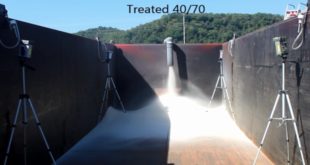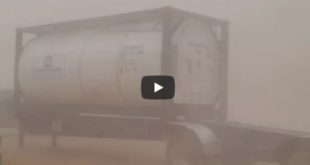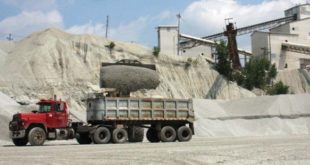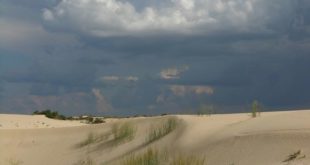Over the past 12 months, US E&P procurement teams have been under immense pressure to keep up with frenetic growth. The time suck of dealing with immediate challenges like frac consumable shortages and logistics issues has been huge. In fact, because of these pressing issues we believe that some operators …
Read More »Dramatic Videos Of Extreme Permian Winds This Week Highlight An Underappreciated In-Basin Risk
We’ve got videos of West Texas sandstorms this week as well as thoughts on what the wind gusts mean for in basin frac sand. Spoiler alert – this is a significant and underappreciated risk and we explain why in this update… There’s a lot more to this story… Login to …
Read More »Revisiting Silicosis Prevention Resources After The 2017 Permian Frac Sand Rush [Guest Post]
The explosion of new industrial (silica) sand mining and processing operations in west Texas suggests the need for a review of one of the oldest known occupational diseases, silicosis, and the strategies that sand mining and processing operations can adopt to prevent the development of silicosis among their respective employees. …
Read More »In-Basin Adversary: 40mph Gusts In Kermit/Monahans Just Tested Sand Stockpiles
High winds ripped through the West Texas dune strip during the past couple days, reminding us of fugitive dust and inventory erosion risks. West Texas poses a unique environmental challenge that the frac sand mining industry has never had to deal with at scale before. We believe wind will be …
Read More »Sand In The Wind: Charting West Texas Vs. Wisconsin Air Currents
Wind presents a big risk factor for West Texas mines. It’s a challenge that mine builders don’t have to design to in Wisconsin, so cookie cutter designs may face issues with open sand pile erosion. After a windy week in West Texas, we put pen to paper to chart the …
Read More »It’s Been Wetter Than Normal This Year In Arid Winkler County. Here’s A Chart And Why It Matters
The Kermit area is extremely dry, having averaged just 11 inches of precipitation per year since 2000 per NOAA records. That’s only about 1/3rd of the national average. Locals we are in contact with as well as some environmental experts we’ve spoken with recently have mentioned that it has been …
Read More » Infill Thinking Lifting the O&G knowledge curve
Infill Thinking Lifting the O&G knowledge curve






